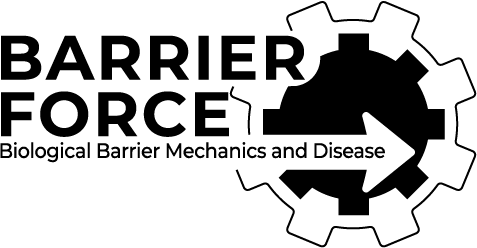Publications
Highlighted publications from CoE
-
Multiparameter imaging reveals clinically relevant cancer cell-stroma interaction dynamics in head and neck cancer
Epithelial tumors are characterized by abundant inter- and intra-tumor heterogeneity, which complicates diagnostics and treatment. The contribution of cancer-stroma interactions to this heterogeneity is poorly understood. Here, we report a paradigm to quantify phenotypic diversity in head and neck squamous cell carcinoma (HNSCC) with single-cell resolution. By combining cell-state markers with morphological features, we identify…
-
The role and regulation of integrins in cell migration and invasion
Integrin receptors are the main molecular link between cells and the extracellular matrix (ECM) as well as mediating cell-cell interactions. Integrin-ECM binding triggers the formation of heterogeneous multi-protein assemblies termed integrin adhesion complexes (IACs) that enable integrins to transform extracellular cues into intracellular signals that affect many cellular processes, especially cell motility. Cell migration is…
-
SHANK3 depletion leads to ERK signalling overdose and cell death in KRAS-mutant cancers
The KRAS oncogene drives many common and highly fatal malignancies. These include pancreatic, lung, and colorectal cancer, where various activating KRAS mutations have made the development of KRAS inhibitors difficult. Here we identify the scaffold protein SH3 and multiple ankyrin repeat domain 3 (SHANK3) as a RAS interactor that binds active KRAS, including mutant forms,…
-
Mechano-osmotic signals control chromatin state and fate transitions in pluripotent stem cells
Acquisition of specific cell shapes and morphologies is a central component of cell fate transitions. Although signaling circuits and gene regulatory networks that regulate pluripotent stem cell differentiation have been intensely studied, how these networks are integrated in space and time with morphological transitions and mechanical deformations to control state transitions remains a fundamental open…
-
TLNRD1 is a CCM complex component and regulates endothelial barrier integrity
We previously identified talin rod domain-containing protein 1 (TLNRD1) as a potent actin-bundling protein in vitro. Here, we report that TLNRD1 is expressed in the vasculature in vivo. Its depletion leads to vascular abnormalities in vivo and modulation of endothelial cell monolayer integrity in vitro. We demonstrate that TLNRD1 is a component of the cerebral…
-
Restoring mechanophenotype reverts malignant properties of ECM-enriched vocal fold cancer
Increased extracellular matrix (ECM) and matrix stiffness promote solid tumor progression. However, mechanotransduction in cancers arising in mechanically active tissues remains underexplored. Here, we report upregulation of multiple ECM components accompanied by tissue stiffening in vocal fold cancer (VFC). We compare non-cancerous (NC) and patient-derived VFC cells – from early (mobile, T1) to advanced-stage (immobile,…
-
Membrane remodeling by FAM92A1 during brain development regulates neuronal morphology, synaptic function, and cognition
The Bin/Amphiphysin/Rvs (BAR) domain protein FAM92A1 is a multifunctional protein engaged in regulating mitochondrial ultrastructure and ciliogenesis, but its physiological role in the brain remains unclear. Here, we show that FAM92A1 is expressed in neurons starting from embryonic development. FAM92A1 knockout in mice results in altered brain morphology and age-associated cognitive deficits, potentially due to…
-
PP2A methylesterase PME-1 suppresses anoikis and is associated with therapy relapse of PTEN-deficient prostate cancers
While organ-confined prostate cancer (PCa) is mostly therapeutically manageable, metastatic progression of PCa remains an unmet clinical challenge. Resistance to anoikis, a form of cell death initiated by cell detachment from the surrounding extracellular matrix, is one of the cellular processes critical for PCa progression towards aggressive disease. Therefore, further understanding of anoikis regulation in…
-
Contribution of VEGF-B-Induced Endocardial Endothelial Cell Lineage in Physiological Versus Pathological Cardiac Hypertrophy
Background: Preclinical studies have shown the therapeutic potential of VEGF-B (vascular endothelial growth factor B) in revascularization of the ischemic myocardium, but the associated cardiac hypertrophy and adverse side effects remain a concern. To understand the importance of endothelial proliferation and migration for the beneficial versus adverse effects of VEGF-B in the heart, we explored…
